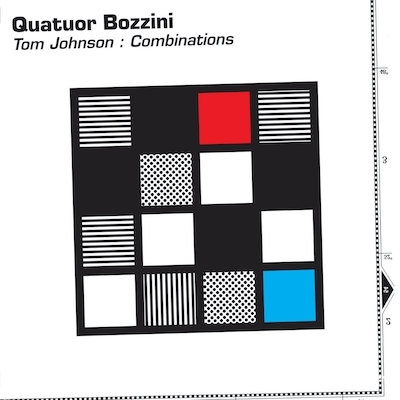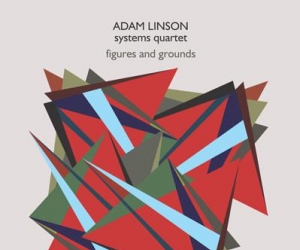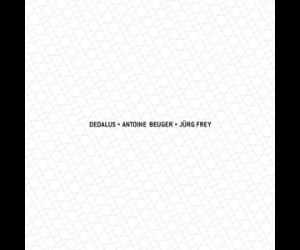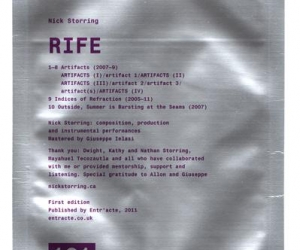
Tom Johnson is a self-described minimalist composer, who has been credited with coining the term in the early ’70s while working as a music critic for the Village Voice. Johnson tends towards the formalistic extreme of minimalism; his works are often based on the mapping of mathematical concepts to musical parameters such as pitch choices, chords, and note durations. The Montreal-based Quatuor Bozzini is well acquainted with Johnson’s œuvre, having premiered several of his works. This recording contains four of Johnson’s compositions spanning fifteen years from 1994 to 2009. The quartet’s precision helps to crystallize the concepts, while their sensitive performance within the rigorous confines of the scores makes this music shine.
Combinations for String Quartet is divided into five movements, each based upon an exhaustive compilation of all combinations of a given idea. For example, the first movement considers all possible permutations of four tones, transposing pairs of notes until one returns to the start. This is realized as a bright sequence of bouncing arpeggios, while other movements that use different combinatorics manifest in elongated string tones and more ominous moods. Similarly, Tilework for String Quartet catalogues every way one can arrange twelve points using a single six-note overlapping rhythm, providing a continuous flow of tones. There are exactly 495 ways to choose four-note chords from the usual set of twelve tones, forming the basis for Four-Note Chords in Four Voices. This is a tense and foreboding work: as the chords are sounded in turn, each section nevertheless resolves in its own dark manner. Formulas for String Quartet was Johnson’s first composition for string quartet, with each of the eight movements based upon a different mathematical formula. While one can sense that some underlying logic is directing proceedings, one equally feels the varied ambiences the composer is able to elicit from each recipe.
Some of Johnson’s other works have had singers or narrators spell out the formal construction in detail as the piece proceeds, almost making them self-contained lectures about how the music was structured. While there are no voices on this CD, the numerical nature of the work sometimes dominates, bringing the architectural skeleton to the fore. More often, however, these constructions fade into the background as a range of emotions emerges, revealing the latent beauty of mathematics.


